Space News
Popsci
63
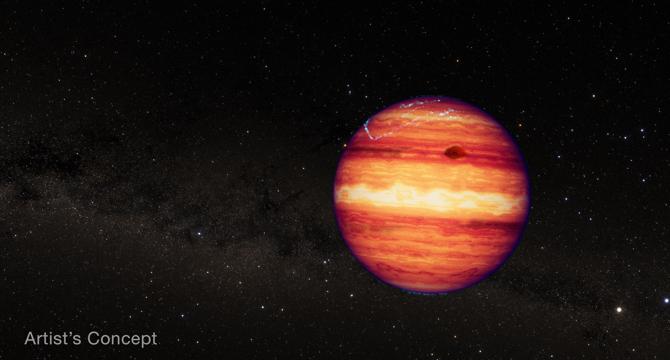
Image Credit: Popsci
Mysterious cosmic body is a rogue ‘Super-Jupiter’
- A phantom “Super-Jupiter” known as SIMP 0136 is a rogue planetary-mass object drifting through the cosmos.
- Recent observations using NASA's James Webb Space Telescope have allowed scientists to gain insights into SIMP 0136.
- SIMP 0136, originally thought to be a brown dwarf, is believed to be a rapidly rotating exoplanet without a star to orbit.
- The data collected revealed complex atmospheric conditions, including fluctuating brightness, temperature variations, and different chemical reactions.
Read Full Article
3 Likes
Armaghplanet
135
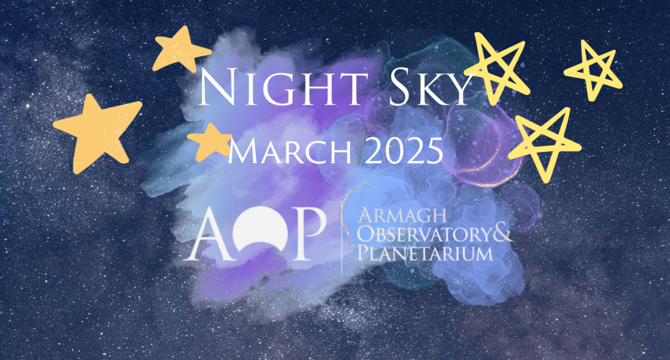
Image Credit: Armaghplanet
March Night Sky 2025
- In March 2025, Saturn will appear to morph into a ringless planet as its ring system will be positioned edge-on to Earth, creating a rare celestial illusion that happens about once every 15 years.
- The full Moon in March, known as the Worm Moon, will become a Blood Moon as Earth's shadow falls on it on the 14th, providing a unique lunar spectacle.
- On the 20th of March, Earth will experience the equinox, where there will be an equal number of daylight and nighttime hours all over the world due to Earth's tilt having no direct effect.
- At the end of March, a partial Solar eclipse will occur with the Moon partially blocking the Sun's face, creating an exciting event for viewers across the globe.
- Despite the Sun being much larger than the Moon, the Moon's disk perfectly covers the Sun's disk during an eclipse, allowing for a significant portion of the Sun to be blocked from view.
- The event should start shortly after 10 am and last for about 2 hours, with up to 40% of the Sun's face being blocked, providing a spectacular astronomical event for observers.
- The alignment of planets in the night sky, the transformation of Saturn, the lunar eclipse, equinox, and partial Solar eclipse make March 2025 an exciting month for stargazing enthusiasts.
- The celestial wonders in March include the alignment of Mars, Venus, and Jupiter, Saturn's ring system illusion, the transformation of the Moon into a Blood Moon, and the equinox phenomenon.
- Additionally, the partial Solar eclipse near the end of March promises a rare and captivating astronomical event that shouldn't be missed.
Read Full Article
8 Likes
Nasa
317
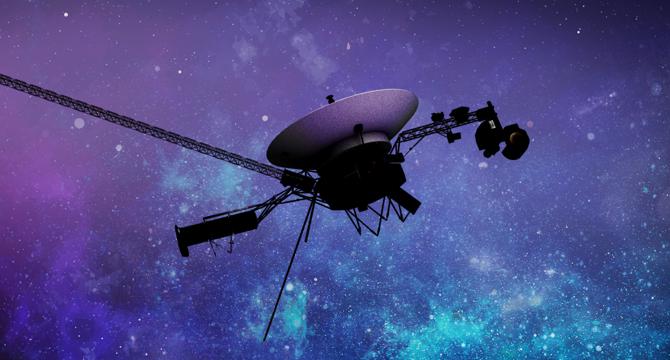
Image Credit: Nasa
NASA Turns Off 2 Voyager Science Instruments to Extend Mission
- NASA's Voyager 1 and Voyager 2 have had two science instruments turned off by mission engineers in a bid to extend their mission.
- The instruments were turned off to conserve energy as the power supply of the twin probes diminishes gradually.
- Voyagers 1 and 2 launched in 1977 and rely on a radioisotope power system that loses about 4 watts of power annually.
- The decision to turn off the cosmic ray subsystem on Voyager 1 and the low-energy charged particle instrument on Voyager 2 was made to prolong their operations.
- Each spacecraft still has three science instruments operating, with some instruments being turned off after the completion of planetary flybys.
- The shut-down instruments include those that studied cosmic rays and particles from the galaxy and the Sun.
- Engineers estimate that the probes could have enough power to continue operating with at least one science instrument into the 2030s.
- Voyager 1 and Voyager 2 remain as the most distant human-made objects, with Voyager 1 over 15 billion miles away and Voyager 2 over 13 billion miles from Earth.
- The spacecraft's exploration of interstellar space continues, with engineers working to maximize the time the Voyagers remain operational.
- The distance between Earth and the probes results in significant communication delays, showcasing the remarkable feats of these long-lasting missions.
Read Full Article
19 Likes
Medium
18

Image Credit: Medium
Breaking China’s Grip: The Race to Reindustrialize and Secure Critical Minerals in the United…
- The United States aims to reindustrialize and compete with China in critical sectors by securing a domestic supply of rare earth elements (REEs) and other critical minerals.
- China strategically expanded rare earth elements production in the late 1980s, leading to a global dominance in extraction and refining capacity.
- China currently controls 60% of global rare earth extraction and 85% of refining capacity, while the U.S. relies heavily on China for processing.
- To reduce dependence on China, the U.S. government has begun investing in rebuilding domestic rare earth refining capacity.
- Innovative approaches include extracting REEs from mining waste, recycling from end-of-life products, AI-driven exploration for deposit discovery, and developing alternative materials.
- Companies like Phoenix Tailings are extracting rare earth elements from coal waste, while startups focus on recycling technologies and AI-driven mineral exploration.
- AI and ML technologies are revolutionizing mineral exploration, improving efficiency in rare earth element discovery and extraction processes.
- Companies like KoBold Metals and Earth AI are leveraging AI for resource discovery, while Niron Magnetics is developing rare-earth-free permanent magnets.
- Securing a stable supply of rare earth elements is crucial for U.S. economic resilience and national security, emphasizing the need for technological innovation and reduced dependence on foreign supply chains.
- By embracing advancements like REE recycling and alternative materials development, the U.S. can strengthen its manufacturing capabilities and lead in critical materials innovation.
Read Full Article
1 Like
Discover more
Nasa
217

Image Credit: Nasa
Hubble Captures New View of Colorful Veil
- The Hubble Space Telescope captures a new view of the Veil Nebula, a famous supernova remnant.
- The Veil Nebula is located about 2,400 light-years away in the constellation Cygnus.
- Hubble's image combines three different filters to highlight emission from hydrogen, sulfur, and oxygen atoms.
- By comparing this image with previous observations, researchers can study the evolution of the nebula over time.
Read Full Article
13 Likes
Nasa
321

Image Credit: Nasa
Crew Works Vein Scans and Muscle Stimulation Prior to Upcoming Departure
- Vein scans and muscle stimulation were conducted on the International Space Station by NASA Flight Engineers Nick Hague and Don Pettit to better understand the effect of weightlessness on the human body and develop countermeasures for muscle atrophy.
- Commander Suni Williams and Flight Engineer Butch Wilmore focused on housekeeping duties and set up temporary crew quarters for the upcoming SpaceX Crew-10 mission.
- The crew members prepared for their return to Earth after the arrival of Crew-10, training and coordinating their roles inside the SpaceX Dragon crew spacecraft.
- Roscosmos Flight Engineer Aleksandr Gorbunov set up imaging hardware to observe Earth's nighttime atmospheric glow and began packing for return to Earth.
Read Full Article
19 Likes
Digitaltrends
127
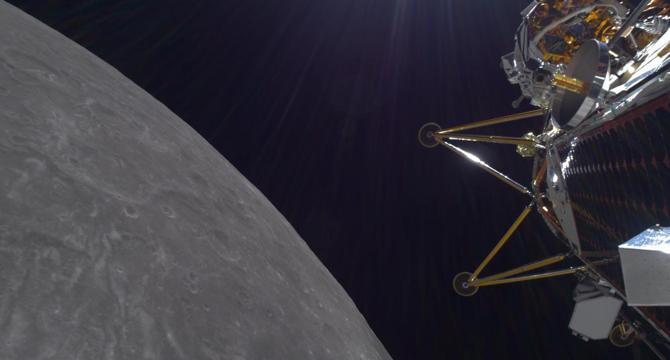
Image Credit: Digitaltrends
There’s another spacecraft landing on the moon tomorrow — here’s how to watch
- Intuitive Machines will attempt to land its Nova-C lander on the moon on March 6, with live coverage provided by NASA.
- This will be Intuitive Machines' second lunar landing, hoping for a successful landing after the previous mission resulted in a tipped lander while making a soft landing.
- The Athena lander is carrying various payloads, including an ice mining experiment and NASA technology for future crewed moon missions.
- The live coverage of the landing will begin on March 6, 11:30 a.m. ET, and can be watched on NASA's YouTube page.
Read Full Article
7 Likes
Arstechnica
99

Image Credit: Arstechnica
NASA just lost yet another one of its low-cost planetary missions
- NASA has lost contact with its Lunar Trailblazer spacecraft, which was launched along with a Falcon 9 rocket in February.
- Efforts are being made by the mission operations team to reestablish contact with the small orbiter.
- Telemetry data and ground-based radar suggest that the spacecraft is spinning slowly in a low-power state.
- The team is monitoring for any changes that may allow the solar panels to receive more sunlight and enable higher-power operations.
Read Full Article
6 Likes
Earthsky
448

Image Credit: Earthsky
Watch as Mars’ moons trade places in the sky
- The European Space Agency (ESA) released images from its Mars Express orbiter showing Mars' moons, Phobos and Deimos, as Phobos crosses in front of Deimos.
- Phobos and Deimos are Mars' potato-shaped moons, likely captured asteroids from the nearby main asteroid belt. Phobos is larger, but still significantly smaller than Earth's moon, while Deimos is smaller and has a thick layer of dust on its surface.
- The animation provided by Andrea Luck shows the occultation of Phobos crossing in front of Deimos, providing an example of this astronomical event.
- Phobos circles Mars three times a day and is gradually getting closer to the planet, with a potential future of crashing into it or shredding into a ring.
Read Full Article
27 Likes
Livescience
140
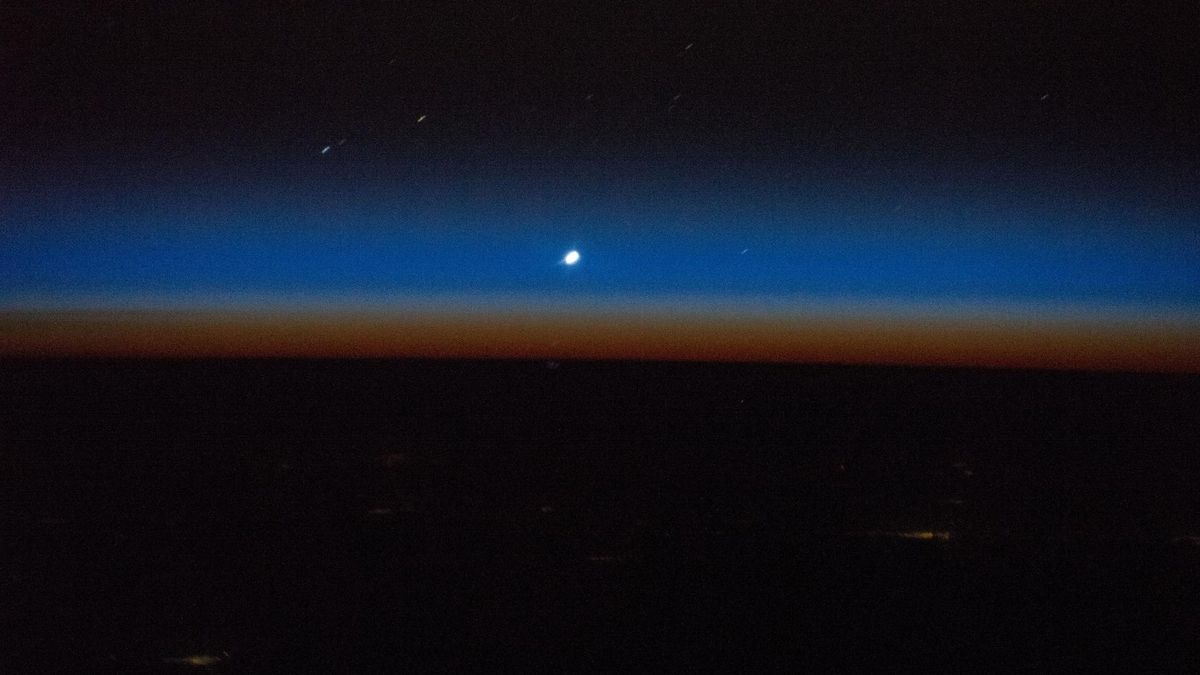
Image Credit: Livescience
'Planet parade' ends with a rare conjunction of Venus and Mercury at sunset. Here's how to watch.
- The rare planetary parade that brought all seven of Earth's neighboring worlds into the night sky is finally breaking up - but not before a final curtain call from the two planets closest to the sun.
- On Monday, March 10, a rare conjunction between Venus and Mercury, the two planets interior to Earth in the solar system, will be visible low to the western horizon after sunset.
- For around 45 minutes, Venus and Mercury will appear close to each other in the sky, providing a rare and interesting celestial sight.
- As the planetary parade comes to an end, Mars and Jupiter will be the only remaining planets visible to the naked eye in the night sky, while a total lunar eclipse will be visible from North America on March 13-14.
Read Full Article
8 Likes
Livescience
258
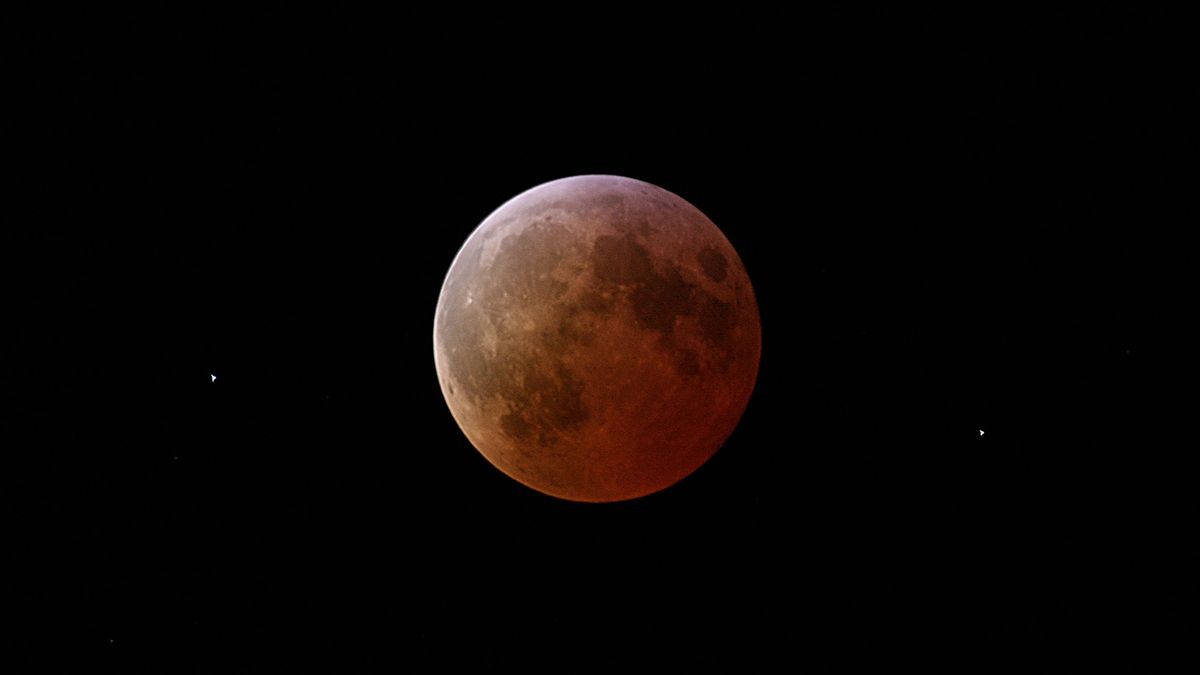
Image Credit: Livescience
How to photograph the moon: Tips on camera gear, settings and composition
- Photographing the moon is a rewarding experience, especially with the upcoming total lunar eclipse on March 13-14, 2025, presenting a fantastic photographic opportunity.
- Various styles of moon photography, from full-phase to crescents and eclipses, require a blend of the best cameras, technique, and creativity.
- 2025 offers several lunar events like supermoons and a total lunar eclipse on September 7–8, providing multiple chances for capturing unique moon images.
- Camera settings during a lunar eclipse require adjusting shutter speed for brightness and considering a location with limited light pollution.
- For moon photography, DSLR or mirrorless cameras offer the best results, though compact cameras with manual settings can also be used effectively.
- Telephoto or super-telephoto lenses are ideal for moon photography, with focal lengths of 200mm or higher recommended for detailed shots.
- Using accessories like tripods for stability, remote shutter releases, and filters can enhance the sharpness and quality of moon images.
- Composition tips include incorporating foreground elements, experimenting with phases, shooting during moonrise/set for better lighting, and avoiding placing the moon dead center.
- Camera settings like shutter speed, aperture, ISO, white balance, and focus are crucial for capturing sharp, detailed moon images, with exposure bracketing recommended for HDR compositions.
- Apps like PhotoPills and The Photographer's Ephemeris can assist in planning moon shoots, even for beginners in astrophotography.
Read Full Article
15 Likes
Earthsky
145

Image Credit: Earthsky
Why Mars is red … and the exciting possibilities for life
- Mars is known as the red planet due to iron oxides, but debate exists over the exact culprit, with a recent study suggesting ferrihydrite instead of hematite.
- The presence of ferrihydrite on Mars implies a wetter and potentially habitable ancient environment, challenging previous dry conditions assumptions.
- A study published in Nature Communications on February 25, 2025, presented evidence supporting ferrihydrite as the primary iron oxide responsible for Mars' red color.
- Previous studies had attributed Mars' red hue to hematite, but the current research indicates ferrihydrite formation in cool water.
- Analysis of Martian dust samples using advanced techniques revealed the presence of ferrihydrite, transforming the understanding of Mars' color origins.
- The stability of ferrihydrite under present-day Martian conditions suggests an earlier onset of rusting on Mars than previously believed.
- The findings suggest a much wetter Mars in the past, potentially impacting the planet's habitability and raising questions about ancient Martian life.
- Observational data and laboratory methods were used to identify ferrihydrite in Martian dust, providing the first solid evidence of its presence.
- Further confirmation of ferrihydrite in Martian samples is anticipated with the return of samples collected by the Perseverance rover.
- The discovery of ferrihydrite as the likely cause of Mars' red color could reshape our understanding of ancient Martian conditions and potential habitability.
Read Full Article
8 Likes
Knowridge
81
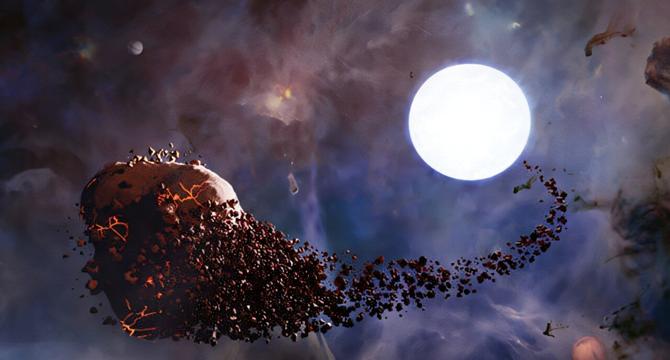
Image Credit: Knowridge
Dying star’s X-Ray mystery solved: A planet was destroyed!
- A nearby planet has been torn apart by a white dwarf at the center of the Helix Nebula, helping to solve the mystery of strange X-ray signals from the nebula.
- The X-rays likely come from the remains of a planet that got too close and was destroyed by the white dwarf's powerful gravity.
- Observations suggest that leftover debris from the destroyed planet is still orbiting the white dwarf.
- This discovery provides insights into the fate of planets when their stars transform into white dwarfs.
Read Full Article
4 Likes
Digitaltrends
99
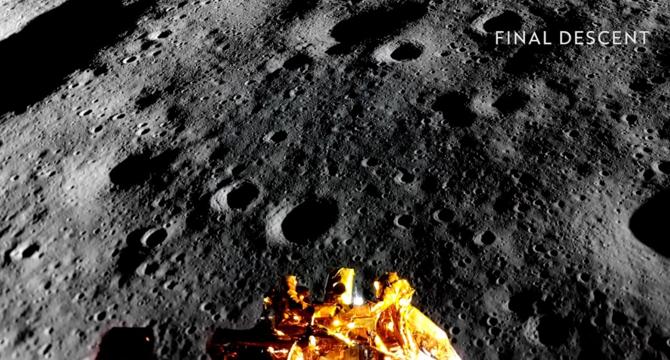
Image Credit: Digitaltrends
Watch incredible video of the Blue Ghost spacecraft landing on the moon
- Firefly Aerospace achieved the first fully successful moon landing by a private company
- The video footage of the Blue Ghost spacecraft landing on the moon is now available
- The footage shows the lander's descent, craters on the moon, and views of the sun and Earth in the sky
- The mission will continue operating and conducting experiments with various NASA payloads
Read Full Article
6 Likes
For uninterrupted reading, download the app